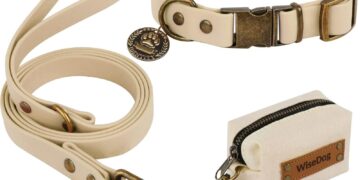Table of Contents
As a behavioral analyst who has spent years deconstructing complex systems, I thought I had it all figured O.T. I’d read the books, made the checklists, and researched every “family-friendly” dog breed until my eyes blurred.1
I was ready to welcome my first dog, a companion for hikes, a furry head on my lap during movie nights.
I was prepared for everything—except the one thing that mattered most: the soul-crushing heartbreak of a failed adoption.
This isn’t just a guide.
This is the story of how getting it profoundly wrong led me to a new way of thinking—a framework borrowed from the high-stakes worlds of executive recruitment and professional matchmaking.
It’s a system that moves beyond the superficial question of “What’s a good first dog?” and asks the far more critical question: “How do I make a perfect, lifelong match?”
In a Nutshell: The Canine Compatibility Framework
For those who need the answer upfront, here is the paradigm shift: Stop shopping for a dog and start hiring one for the most important role in your life.
This involves a four-step process:
- The Client Profile: Conduct a brutally honest self-assessment of your life—your energy, home, finances, and emotional capacity—to create a detailed “job description.”
- Sourcing the Candidate Pool: Learn to look beyond breed labels and decode adoption profiles to find qualified “candidates,” prioritizing dogs in foster care who have a verifiable “work history.”
- The Interview Process: Treat the meet-and-greet like a structured behavioral interview, using specific tests to assess true compatibility rather than just “feeling a spark.”
- The Onboarding Plan: Implement a strategic 90-day plan based on the “3-3-3 Rule” to set your new “hire” up for success and build a foundation of trust.
This is the system I developed after my own failure.
It’s rigorous, it requires work, but it’s designed to prevent the heartache that nearly 10% of adopters experience when a match doesn’t work O.T.5
Part I: The Heartbreak of Getting It Wrong: My Failed Adoption Story
My journey began with a dream.
I pictured a loyal companion, a dog whose breed description promised an “eager-to-please” and “adaptable” nature.
I bought the best food, the orthopedic bed, the puzzle toys—I was, by all accounts, a model prospective owner.7
Then I met “Max.”
Max was a beautiful adolescent dog of a supposedly “easy” breed.
In the shelter, he was a little frantic, but I chalked it up to the stressful environment.
I signed the papers, paid the fee, and brought him home, my heart swelling with visions of our future.
The reality was a slow-motion catastrophe.
My quiet, second-floor apartment became a pressure cooker for his boundless energy.
The “moderate exercise” the breed guides mentioned was a staggering understatement.
He needed to run, hard, for hours—something my 9-to-5 schedule and urban lifestyle simply couldn’t accommodate.5
His unspent energy curdled into anxiety and destruction.
He shredded door frames, howled incessantly when I left, and developed a frantic, inconsolable panic that no amount of puzzle toys could soothe.5
I tried everything: trainers, long morning runs that left me exhausted before my workday even began, expensive daycare.
But the core problem remained: we were a fundamental mismatch.
My life was a square hole, and Max was the most wonderful round peg imaginable.
He wasn’t a “bad dog.” He was a brilliant, high-drive athlete trapped in a librarian’s life.
The decision to return him to the shelter was one of the most painful I’ve ever made.
It was a confession of failure that left me hollow.
I had followed all the rules, and the result was immense stress for both me and a dog I had promised to protect.12
In the aftermath, my analyst brain took over.
I realized the conventional wisdom was flawed.
The system had failed us both.
The problem isn’t that some dogs are “bad” or have “behavioral issues.” The data shows that many reasons for return—hyperactivity, separation anxiety, destructiveness—are not character flaws but rather predictable outcomes of a bad match.5
First-time owners consistently underestimate the time, financial, and energy commitments required.13
Max’s “bad behavior” was simply his
natural behavior manifesting in an environment that couldn’t meet his needs.
The “good dog” myth is a trap.
It places the blame on the animal, when the failure often lies in a selection process that prioritizes a superficial label over a deep, systemic analysis of compatibility.
Part II: The Epiphany: Dog Adoption Isn’t Shopping, It’s Professional Matchmaking
My failure with Max sent me down a rabbit hole.
I abandoned dog-centric research and began exploring other fields obsessed with a single concept: high-stakes compatibility.
I dove into the methodologies of elite matchmakers and executive talent recruiters, and what I found was staggering.
These professionals would never dream of making a match based on a few photos and a generic bio. Their success depends on a rigorous, data-driven process that begins not with the candidate, but with the client.
Elite matchmakers conduct exhaustive discovery sessions to understand a client’s core values, communication style, lifestyle, and non-negotiables before ever looking at potential partners.16
They know that long-term success isn’t about shared hobbies; it’s about aligned life goals and compatible emotional needs.19
Similarly, top-tier recruiters use a battery of tools to ensure a perfect fit between a candidate and a company.
They employ personality assessments, situational judgment tests, and structured behavioral interviews to go beyond the resume and predict how a person will actually perform and thrive within a specific company culture.22
They aren’t just filling a seat; they are making a strategic, long-term investment.
That was the epiphany.
I had treated finding a life partner for the next 15 years like I was picking out a sweater.
The entire paradigm was wrong.
The typical adoption process, often a first-come, first-served transaction with a brief meeting and some paperwork, is structured like a retail experience.26
It’s a fundamentally flawed model for a decision of this magnitude.
A successful adoption requires you to stop being a passive “shopper” hoping to find a “good dog.” You must become the proactive “hiring manager” for a critical, long-term role in your life.
You must run your own rigorous, professional-grade selection process.
Part III: The Canine Compatibility Framework: A Four-Pillar System for a Perfect Match
This framework operationalizes the matchmaking mindset.
It is a systematic approach to de-risk your decision and ensure you find a dog with whom you can build a truly successful, lifelong partnership.
Pillar 1: The Client Profile — A Brutally Honest Self-Assessment
Before you even open a pet adoption website, you must create your “Client Profile” or “Job Description.” This is the most critical step, and it requires radical honesty about your actual life, not your aspirational one.
Too many adoptions fail because people get a dog for the life they want, not the life they have.28
This assessment turns vague notions into hard data.
| The Personal Compatibility Assessment | |
| This questionnaire is designed to create a data-driven profile of your household. Answer based on your reality over the past year, not what you hope to do in the future. | |
| Section A: Energy & Activity | |
| 1. Daily Exercise Output: On an average weekday, how much dedicated, moderate-to-high intensity exercise (brisk walking, running, vigorous play) can you realistically provide? ☐ < 30 minutes (low) ☐ 30-60 minutes (moderate) ☐ 60-90 minutes (high) ☐ 90+ minutes (very high) | |
| 2. Weekend Activity Style: How do you spend your weekends? ☐ Mostly relaxing at home, quiet activities. ☐ A mix of home time and local outings (cafes, parks). ☐ Long hikes, running, or other intense outdoor adventures. | |
| Section B: Home Environment & Social Life | |
| 3. Living Space: What is your primary residence? ☐ Apartment/Condo with no private yard. ☐ House with a small, fenced yard. ☐ House with a large, fenced yard or acreage. | |
| 4. Household Noise & Activity Level: What is the energy of your home? ☐ Very quiet and calm; few visitors. ☐ Moderately active; regular visitors or children over 12. ☐ Busy and chaotic; frequent visitors, young children. | |
| 5. Existing Pets: Do you have other animals? ☐ No other pets. ☐ Yes, one or more cats. ☐ Yes, one or more dogs. | |
| Section C: Time & Financial Commitment | |
| 6. Time Alone: On a typical day, how long will the dog be left alone? ☐ Less than 4 hours (work from home, retired). ☐ 4-6 hours. ☐ 8+ hours. | |
| 7. Annual Budget: Excluding one-time adoption fees, what can you comfortably budget for a dog annually (food, vet care, insurance, grooming, training, boarding)? 7 | ☐ ~$1,500 ☐ ~$2,500 ☐ ~$4,000+ |
| Section D: Emotional Capacity & Training Philosophy | |
| 8. Grooming Tolerance: How much time are you willing to commit to grooming? ☐ Minimal (weekly brushing at most). ☐ Moderate (several times a week, okay with some shedding). ☐ High (daily brushing, willing to pay for professional grooming). | |
| 9. Training Commitment: How much time will you dedicate to formal training in the first year? ☐ Basic house rules and commands at home. ☐ Weekly puppy/obedience classes. ☐ Consistent, ongoing training for sports or advanced obedience. | |
| 10. Temperament Preference: What is your ideal dog personality? ☐ Independent, happy to do their own thing. ☐ Affectionate and people-oriented, a “velcro” dog. ☐ Confident and protective, a natural watchdog. |
Your answers to these questions create a non-negotiable filter.
For example, if you scored “low” on exercise and live in a small apartment, you should immediately disqualify all high-energy sporting and herding breeds, no matter how beautiful they are.
This data-driven approach protects you from the emotional pull of an incompatible dog.
Pillar 2: Sourcing the Candidate Pool — Looking Beyond the Breed Label
With your “Job Description” in hand, you can now begin sourcing candidates.
This means looking for dogs that match your specific, quantified needs.
Breed as a Guideline, Not a Guarantee: Breed can give you valuable clues about potential energy level, grooming needs, and general temperament.1
A Labrador Retriever is more likely to need significant exercise than a Basset Hound.
However, especially with rescue dogs of unknown lineage, individual personality trumps breed generalizations every time.8
Use breed as a starting point for your search filters, not as a final verdict.
Decoding Adoption Profiles: Learn to read between the lines.
A profile on a site like Petfinder is a dog’s resume.27
- “Loves to run and play” often means “Needs a minimum of 60-90 minutes of vigorous exercise daily.”
- “Would do best as an only dog” is a serious flag that requires deep investigation into potential dog reactivity or resource guarding.
- “A little shy at first” could mean anything from needing a few minutes to warm up to having deep-seated fear issues that require extensive rehabilitation.
The Power of Foster Homes: A Living Résumé: The single greatest challenge in adoption is the information gap.
A dog’s behavior in a loud, stressful shelter kennel is a poor predictor of its behavior in a quiet home.7
This is where foster-based rescues are invaluable.
A dog that has been in a foster home for several weeks or months comes with a living, breathing reference check.32
The foster parent can provide detailed, real-world data on the dog’s true energy level, house-training status, quirks, and triggers.
Prioritizing a fostered dog is the most strategic, data-driven way to de-risk your decision.
You are choosing a candidate with a proven track record in a relevant work environment.
Pillar 3: The Interview Process — Assessing True Compatibility
Once you’ve identified promising candidates, it’s time for the “interview”—the meet-and-greet.
Do not let this be a passive, 15-minute petting session.6
Your goal is to gather objective data that confirms or contradicts the dog’s “resume.” This is your chance to run a series of informal behavioral and situational judgment tests.23
| The Meet-and-Greet Observation Guide |
| Behavioral Test |
| Response to Novel Object: Casually drop your keys a few feet away. |
| Handling Sensitivity: Gently touch the dog’s paws, look in its ears, and lift its lips to see its teeth. |
| Toy Drive & Engagement: Offer a toy. Does the dog engage? Does it bring it back? Does it guard it? |
| Social Pressure: Have a second person (a friend or shelter staff) approach and greet the dog. |
| Recovery Time: After a startling event (like the key drop), how quickly does the dog return to a calm state? |
Interviewing the Humans: You must also interview the foster parent or shelter staff.
They are the dog’s “former manager.” Ask probing questions:
- “Can you describe the dog’s worst day with you? What happened?”
- “What are his specific triggers? What scares him?”
- “How does he really behave when left alone?”
- “What kind of training have you done, and what was his response?”
For introductions to existing family members, especially other dogs, always insist on a neutral location like a park.33
A head-on meeting in your home or yard can trigger territorial behavior and set the relationship up for failure.10
Pillar 4: The Onboarding Plan — The First 90 Days to Success
You’ve made your hire.
The work is just beginning.
In the corporate world, a great employee can fail without a proper onboarding process.
The same is true for a dog.
The first three months are a critical adjustment period where you establish routines, build trust, and proactively prevent the very behaviors that lead to returns.
The “3-3-3 Rule” provides an excellent roadmap for this phase.35
| The 3-3-3 Rule Onboarding Roadmap |
| Timeframe |
| The First 3 Days |
| The First 3 Weeks |
| The First 3 Months |
This onboarding process is your primary tool for preventing problems.
Proper socialization prevents fear and aggression.13
Consistent training establishes communication and prevents unruly behavior.37
Creating a solid routine and using tools like a crate can mitigate separation anxiety.8
By managing this period proactively, you are building the foundation for a lifetime of success.
Conclusion: From a Perfect Match to a Lifelong Bond
Years after the heartbreak of returning Max, I decided to try again.
This time, I didn’t search for a breed; I created a profile.
I was a moderately active person in a quiet home who needed a dog with low-to-medium energy, high confidence with strangers, and minimal grooming needs.
After weeks of screening “candidates,” I found “Charlie” in a foster home.
His “resume” was perfect, and his foster mom’s reference was glowing and detailed.
Our “interview” confirmed everything—he was calm, resilient, and affectionate.
I followed the onboarding plan to the letter.
Today, Charlie is sleeping at my feet as I write this.
He is the perfect match—not because he’s a “perfect dog,” but because we are perfectly suited to each other’s needs, limitations, and lifestyles.
The journey to find a dog is not a simple shopping trip; it is one of the most significant commitments you will ever make.
By shifting your mindset from that of a consumer to that of a dedicated, professional matchmaker, you honor the gravity of that choice.
It requires more effort, more introspection, and more discipline.
But in return, it transforms a game of chance into a strategic process that paves the way for a truly profound and lasting bond.
Works cited
- 14 Best Dogs for First-Time Owners – The Spruce Pets, accessed August 15, 2025, https://www.thesprucepets.com/best-dogs-for-first-time-owners-4153979
- 15 Best Dog Breeds For First-Time Owners – Unleash Fido, accessed August 15, 2025, https://unleashfido.com/15-best-dog-breeds-for-first-time-owners/
- What are some good examples of a breed with an excellent temperament? – Quora, accessed August 15, 2025, https://www.quora.com/What-are-some-good-examples-of-a-breed-with-an-excellent-temperament
- www.google.com, accessed August 15, 2025, https://www.google.com/search?q=family-friendly+dog+breeds
- Heartbreak: When Pet Adoption Doesn’t Work Out – Union Lakes Blog, accessed August 15, 2025, https://unionlakeveterinaryhospital.com/blog/heartbreak-when-pet-adoption-doesnt-work-out
- Failed Pet Adoptions Happen, And Even Good Owners Aren’t Immune – Wide Open Spaces, accessed August 15, 2025, https://www.wideopenspaces.com/failed-pet-adoption/
- 14 Tips for First-Time Dog Owners – Daily Paws, accessed August 15, 2025, https://www.dailypaws.com/dogs-puppies/dog-adoption/first-time-dog-owner-tips
- You Just Adopted A Dog, Now What? – Canine Cohen, accessed August 15, 2025, https://caninecohen.com/newdog
- Common Surrender Reasons (Dogs) – MSPCA-Angell, accessed August 15, 2025, https://www.mspca.org/pet_resources/common-surrender-reasons-dogs/
- Canine Rehoming Failure Rate: Why Returns Happen & How to …, accessed August 15, 2025, https://www.pets4homes.co.uk/pet-advice/canine-rehoming-and-its-failure-rate.html
- The Dark Side of Dog Ownership: What Most Pet Owners Ignore – K9 Services Unlimited, accessed August 15, 2025, https://k9servicesunlimited.com/the-dark-side-of-dog-ownership-what-most-pet-owners-ignore/
- Unsuccessful animal adoptions – Improve Veterinary Education US, accessed August 15, 2025, https://improveinternational.com/us/unsuccessful-animal-adoptions/
- 10 First-Time Dog Owner Mistakes and How To Avoid Them …, accessed August 15, 2025, https://www.pumpkin.care/blog/first-time-dog-owner-tips/
- Overcoming 10 Unspoken Challenges of New Pet Ownership, accessed August 15, 2025, https://www.funkybunchpetcare.com/blog/overcoming-unspoken-challenges-of-new-dog-ownership
- Ultimate First Time Dog Owner Guide: Expert Tips – Earth Rated, accessed August 15, 2025, https://www.earthrated.com/blogs/blog/ultimate-first-time-dog-owner-guide-expert-tips
- How Professional Matchmakers Instill Trust in High-Profile Relationships, accessed August 15, 2025, https://kelleher-international.com/how-professional-matchmakers-instill-trust-in-high-profile-relationships/
- How Professional Matchmakers Instill Trust in High-Profile Relationships, accessed August 15, 2025, https://selectdatesociety.com/blog/how-professional-matchmakers-instill-trust-in-high-profile-relationships
- Secrets of Professional Matchmaking Services – Dating Agency Reviews, accessed August 15, 2025, https://datingagencyreviews.co.uk/secrets-of-professional-matchmaking-services/
- 12 Key Points Of Love Compatibility In A Relationship | BetterHelp, accessed August 15, 2025, https://www.betterhelp.com/advice/love/12-key-points-of-love-compatibility/
- What makes for a better long-term partner? Someone with a similar personality but different interests and goals or someone with a very different personality but the same interests and goals? – Reddit, accessed August 15, 2025, https://www.reddit.com/r/AskOldPeople/comments/1ikmqsq/what_makes_for_a_better_longterm_partner_someone/
- The Relation Between Big Five Personality Traits and Relationship Formation Through Matchmaking – MDPI, accessed August 15, 2025, https://www.mdpi.com/2813-9844/7/2/52
- How To Use Talent Assessments To Improve Your Hiring Process | Vervoe Blog, accessed August 15, 2025, https://vervoe.com/how-to-use-talent-assessments-to-improve-your-hiring-process/
- What is Job Compatibility? Factors, Tools, Examples – HiPeople, accessed August 15, 2025, https://www.hipeople.io/glossary/job-compatibility
- How to Assess and Hire for Cultural Fit in 2025/26, accessed August 15, 2025, https://www.assesscandidates.com/cultural-fit-hiring/
- Cultural Fit Assessment: How to Interview Potential Hires for Culture Compatibility – SSR, accessed August 15, 2025, https://www.selectsoftwarereviews.com/blog/testing-for-culture-fit
- Pet Adoptions – Wake County Government, accessed August 15, 2025, https://www.wake.gov/departments-government/animal-services/pet-adoptions
- Pet Adoption 101: Steps, Costs, and Tips for a Smooth Transition – Los Angeles Times, accessed August 15, 2025, https://www.latimes.com/companion-animals/advice/story/pet-adoption-guide
- 5 Valid Reasons for Denying Pet Adoption: Why NOT to Adopt a Pet – Petful, accessed August 15, 2025, https://www.petful.com/animal-welfare/5-reasons-for-denying-pet-adoption/
- 10 New Puppy Owner Mistakes & How to Avoid Them |Pet Parenting – Trupanion, accessed August 15, 2025, https://www.trupanion.com/pet-blog/article/new-puppy-owner-mistakes
- Preparing for a Rescue Dog – Journey Home Animal Care Center, accessed August 15, 2025, https://jhacc.org/preparing-for-a-rescue-dog/
- We May Be Making Dog Adoptions Too Complicated – Faunalytics, accessed August 15, 2025, https://faunalytics.org/we-may-be-making-dog-adoptions-too-complicated/
- Can someone explain how rescues work? : r/dogs – Reddit, accessed August 15, 2025, https://www.reddit.com/r/dogs/comments/1b9t9t2/can_someone_explain_how_rescues_work/
- Am I Ready to Adopt a Dog? 10 Questions to Ask Yourself – The Vets, accessed August 15, 2025, https://thevets.com/blog/10-questions-to-ask-yourself-before-adopting-a-pet/
- ADOPT A PET – SPCA of Wake County, accessed August 15, 2025, https://spcawake.org/appointments/
- What to expect in the first 3 months after adopting a new dog – State Farm, accessed August 15, 2025, https://www.statefarm.com/simple-insights/family/the-3-3-3-rule-when-bringing-home-an-adopted-dog
- 8 First-Time Dog Owner Mistakes You Don’t Want To Make – Pawp, accessed August 15, 2025, https://pawp.com/8-first-time-dog-owner-mistakes-you-dont-want-to-make/
- Avoid These 5 Common Mistakes: A Guide for New Dog Owners, accessed August 15, 2025, https://www.keendogtraining.com/blog/avoid-these-5-common-mistakes-a-guide-for-new-dog-owners






